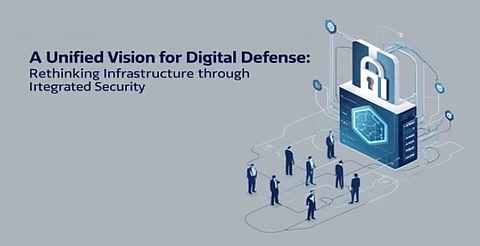

In today's rapidly evolving digital landscape, where threats are increasingly sophisticated and environments highly distributed, traditional divides between network operations and cybersecurity are no longer viable. Sharanya Vasudev Prasad, a technology researcher and advocate for integrated infrastructure, outlines how the convergence of networking and security represents not just a technical evolution, but a necessary rethinking of digital infrastructure. With a strong background in cyber policy and secure systems, sets the tone for a critical transformation reshaping how organizations protect their digital assets.
Historically, networking and security teams operated as distinct silos, focusing separately on connectivity and threat defense. This fragmented approach introduced security blind spots and delayed incident response. However, the modern enterprise, with its hybrid networks and cloud services, demands a model where security isn’t an add-on but an intrinsic part of the network itself. The transition from managing two disjointed teams to a single, converged structure has proven effective in reducing breach costs and operational friction while improving threat containment.
Rather than relying on external checkpoints, the converged architecture embeds security into the core of the network fabric. This decentralized model disperses controls across every layer of the infrastructure, creating a “security mesh” that reacts in real time. Integrated systems with unified monitoring and centralized policy enforcement offer adaptive protection that scales with digital complexity. Contextual awareness adjusting access and controls based on real-time factors like user behavior or device profile adds another dynamic layer of defense, enhancing organizational resilience.
Three critical technologies are propelling this shift. First, Software-Defined Networking (SDN) decouples hardware from control systems, enabling agile policy enforcement across entire environments. Second, Secure Access Service Edge (SASE) combines network and security functions in a cloud-native solution that secures remote users and cloud platforms with ease. Finally, Zero Trust Architecture reinforces a “never trust, always verify” model, where access is granted only after continuous authentication. These pillars provide a programmable, responsive framework for integrated security across diverse systems.
Vast is the list of organizational benefits unlocked by convergence. Unified frameworks reduce tool redundancies, create process efficiencies, and empower faster coordinated responses to threats. Reduction in blind spots and greater visibility will help security teams to automate response to known threats-by doing so, they get time freed up to focus on strategic risks. In a climate wherein security must enable innovation and not act as a hindrance, that coherent griding of protection and performance is of essence.
Also, resource optimization is another potential perk of convergence. By dissolving boundaries that exist between network and security domains, companies could virtually overlap in staffing, ease auditing procedures, and cut cross-team coordination inefficiencies.
While the technological roadmap is ever so increasingly clear, with the actual implementation not free from the attendant hindrances, organizational inertia is a major obstacle. Teams that have been built in very siloed operations over decades often find it difficult to put working objectives, metric, and responsibilities on the same page. Bridging the skills gap is equally important: today's professionals must learn to operate in both domains, combining deep network knowledge with advanced security acumen.
Legacy systems constitute another form of structural challenge. Whereas many infrastructures will not cooperate for seamless integration and will require careful and phased upgrades, organizations willing to retrain and embrace the willingness of employees to venture into cross-disciplinary teamwork while at the same trying to extract a credible buy-in at the executive level will find these barriers easy to circumvent with a clear strategic focus.
As businesses adopt multi-cloud strategies and enable more remote workforces, it is crucial that organizations accelerate their converged security strategies. Analysts agree that static defenses and reactive protocols are ineffective in the rapidly evolving digital economy, where threats evolve more rapidly than ever. It is a world with a future of architectures employing artificial intelligence and enhancing human oversight, resulting in automated, adaptive protections that are part of the overall network core.
This proactive and integrated approach enables organizations to move away from reactive threat management and responsibly focus on the long-term: building resilient infrastructures that are secure, agile, scalable, and aligned with business innovation.
As organizations grow more vigilant and agile, the convergence of security and networking will form the foundation of digital trust. By having that protection apply through the different levels of infrastructure, organizations can face down all but the most daunting threats and bolster innovation. This strategic balance is the key to building secure digital ecosystems and future-proof technology in an hyper-connected world.
In conclusion, Sharanya Vasudev Prasad’s detection of lack of safe formula to look in the future. We’re living in a time of unparalleled complexity and change, and making security an integral part of our networks is no longer merely a best practice; it’s a fundamental shift. With the convergence valley changing the digital landscape, the company that recognizes this the earliest probably will be best prepared to take the lead with confidence.
